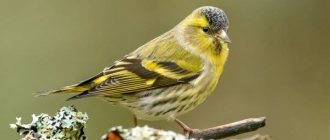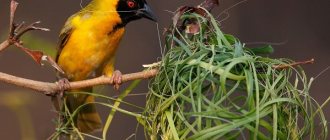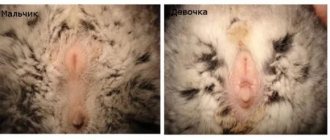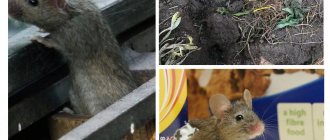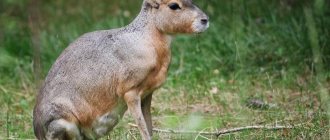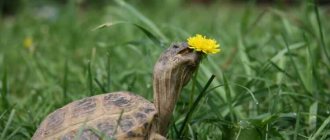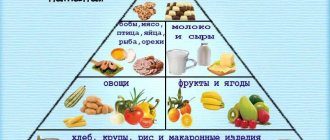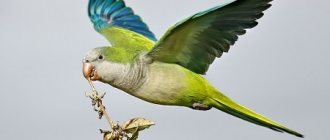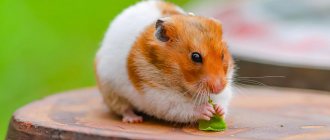The most famous species among storks is the white one. These are beautiful, graceful birds with a large wingspan - up to 2 meters in some adults. This species is called white because this color predominates in color. Black plumage is present as an edging of the natural plumage: on the tips of the wings and tail. They move on slender, long stilt legs, and hunt for frogs and fish with the help of a long beak, which works like skillful tweezers in the hands of a surgeon. Let's find out where storks live, so close to us in fairy tales and legends since childhood!
What does it look like
— Advertising —
Photo of a stork in the meadow
The stork is a stately, tall bird with a large barrel-shaped body, thin stilted legs and a long, straight, conical beak. The neck is long, flexible, and sharply curved back at the top. The head looks forward, the end of the beak is directed downward.
In the plumage of all types of storks there are two colors - white and black, each variety has a different color ratio. The powerful paws are partially feathered, the skin on them is red-gray, covered with sparse gray down. Toes without webs.
Two storks in the water opened their wings
— Advertising —
Storks have huge wings, their span is 1.5-2 meters. When fully expanded, the back of the wings forms a straight line. The wings move with a large amplitude, which allows the bird to quickly gain height. In flight, storks can reach speeds of up to 45 km/h. In flight with rising air currents they glide. Soaring is achieved due to wide wings beveled at the end, an elongated forearm and a short shoulder. While soaring, the stork goes into rest mode: cardiac activity decreases, the pulse is 100-120 beats per minute. A short sleep lasts 15-20 minutes, then the bird enters the wakefulness stage and increases its speed of movement.
The tail of storks is of moderate length, blunt at the end. It's always black.
Photo of a stork close up
Storks' faces are not feathered. The skin around the eyes may be black, red or blue, depending on the species. The color of the stork's beak is red, but there are birds with gray and black beaks.
Stork beak
Stork in nature
As has been noted, the beak of storks is long and thin, straight, tapered at the end. The bird “works” with it like tweezers, capturing aquatic life from a shallow depth. The stork holds the victim across its body, then makes a sharp swing of its head, tossing the carcass, and swallows it completely.
Photo of a stork's beak
Those who have ever watched a stork may have noticed that storks knock with their beaks. This is how birds communicate with each other. Due to the peculiar structure of the vocal apparatus, most species of storks are deprived of the ability to make sounds similar to other birds. The exception is the Black Stork. It may make sounds similar to loud inhalation. The stork knocks with its beak, and the air passing between the halves of the beak transforms into a quiet whistle or hiss. By clinking their beaks, birds warn their relatives about danger, show sympathy, and mate. Other storks click their beaks without any whistles. Males constantly click their beaks during love games. Their “songs” are a series of rapid chattering sounds of their jaws. During the mating ritual, the male and female knock their beaks together as a sign of sympathy.
Why do storks stand on one leg?
The stork stands on one leg.
The unusual habit of the stork to stand on one leg is not a bird’s whim, but a vital necessity. Birds spend most of their time in the water, and if they stand on both legs, they will quickly freeze. Therefore, storks have to bend one leg and hide it in the feathers under their belly - this is how birds carry out thermoregulation. Storks, like flamingos and herons, sleep standing on one leg. The peculiar structure of the bird's paws helps maintain balance while standing on one leg. At the same time, the muscles in this position are relaxed and the birds do not get tired.
Natural enemies
Due to the large size and high location of the nests, storks do not have many enemies. Most often, their numbers are declining due to climate change, landscape changes and human activity. A dangerous enemy in modern cities is power lines. In addition, it has been precisely proven that sometimes storks themselves clear their population of weak individuals.
Photo: proprikol.ru
Starling (50 photos): description of the bird, habitat and what it eats
Female and male: differences
Male
The male weighs up to 4 kilograms. The male representative has a powerful body with a retracted chest, wide long wings, and a medium-sized tail. In some species, the area around the eyes turns blue during the breeding season.
Female and male stork in the nest
Female
The weight of the female varies from 2 to 2.5 kilograms. Her body is not as built up as that of the male. The neck is shortened, shaped like the number “2”. The beak is pressed to the neck.
Appearance
The white stork is a fairly large bird: its length is 102 cm, its height is more than 1 m, and its weight is about 4 kg. The plumage is white, the flight feathers are black. In a standing bird, the entire back part of the body appears black, which is reflected in the Ukrainian name of the bird - Chernoguz. The feathers of the lower part of the neck are elongated and ruffled. The beak and legs are red, the throat pouch, frenulum and iris are black.
Spreading
Habitat of the stork
In Russia, storks live in the territory from the Baltic Sea to the Urals, then in Southern Siberia and the Far East, bypassing the Kuril Islands and Kamchatka. A small group of black storks lives in Chechnya and Dagestan. Outside Russia, they live in Asia, Eastern Europe, Africa, and are found sporadically in the Netherlands, Iceland and southern Saxony. In North America and England, as well as in Australia, there are no storks of the genus Ciconia.
Where do storks live
A stork drinks water from a lake.
Storks live in quiet, dense deciduous forests, next to swamps and lakes rich in aquatic life. Storks live in tall trees. These birds are found in hilly and mountainous areas. Some species of storks, in particular White storks, nest next to humans. They build nests on power lines and roofs of outbuildings.
Population and species status
In Western Europe, the number of these birds has been declining for many years, and there are no longer black storks in Scandinavia. At their wintering grounds in India, the number of these birds is also constantly decreasing. Previously, this bird could be seen within the Mai Po swamp, and in large numbers. Nowadays, it is unlikely that a black stork will be found within this swamp. A similar picture is observed throughout the Chinese habitat.
The habitat of black storks has recently undergone significant changes in much of Eastern Europe, as well as in Asia, which poses a serious threat to these birds. On the territory of Russia, natural habitats are also being reduced as a result of deforestation in particularly large volumes. As a rule, large trees on which black storks build nests are destroyed first.
In Asia and southern Europe, storks are threatened by hunters, which can lead to the destruction of breeding populations. In northern Italy there is a valley of the Ticino River, within which black storks previously lived. So, nowadays there are no black storks here! In 2005, scientists released several individuals into the Lombardo del Ticino park to try to restore the lost population.
Current populations of black storks are threatened by:
- Active development of new territories.
- Construction of dams.
- Construction of irrigation structures, as well as construction of hydroelectric power stations.
On the territory of the African continent, the same development of new territories is practiced with the aim of allocating them for agricultural needs. This factor, in turn, involves the use of various chemistry, which kills various representatives of living nature. In addition, birds die from collisions with power lines and overhead cables.
Is the stork a migratory bird or not?
Stork bird in flight
Storks are migratory birds. Every year at the end of summer they fly to warmer climes. The young ones fly away first. Young birds gather in flocks and fly along the same routes and to the same places as their parents. Adults are removed from the site a little later. The birds fly in a wedge at an altitude of 1-2 kilometers. The flight continues throughout daylight hours; at night, the storks make a stop. The distance that birds cover during migration is 6-9 thousand kilometers. In spring, the birds form flocks again and fly back. Young animals can remain “overwintering” from one to three years before reaching sexual maturity.
Species living in South Africa, Central and Southern Europe, America, Japan and Asia lead a sedentary lifestyle, since food remains freely available for them all year round.
When do storks fly away for the winter?
The stork flies away to warmer regions
Like all migratory birds, storks fly away to warmer regions by the beginning of autumn and return back after 6-7 months. Storks from Belarus fly away for the winter in mid-August. The signal for the start of migration is the first night cold snap and shortening of daylight hours. Storks from the Kaliningrad region fly south in early September. In warm autumn, birds stay in their habitat until the end of the month. Storks return from wintering in early March. From the Leningrad region, storks fly south already in July. Returns occur in early April. Chinese storks move away closer to October.
Where do storks spend the winter?
Two storks in a field
Different species of storks have their own wintering place. One of the countries where storks fly is Africa. Storks from Russia migrate to East Africa for the winter, Belarusian storks spend the winter in the south of the African continent. Some species fly to Asia Minor during the summer. Belarusian storks fly southwest to Spain and Gibraltar. Some flocks remain to bask there. Others continue their journey through Morocco, Mauritania, Senegal, and Guinea to the south of the continent. Spanish and Algerian birds join the European storks as the school moves. A significant portion of birds remain for the winter in West Africa, in particular Senegal and Nigeria. Russian birds fly to Africa through Asia Minor and Israel to the east coast of Africa - to Ethiopia, Kenya, and Somalia. In warm winters, the migration route is shortened. If weather conditions permit, storks remain for the winter on the coasts of the Mediterranean and Black Seas.
Habitat
On European territory there are black and white storks, which are classified as migratory birds. In central Europe, these birds appear in February/March. These birds are not found in the vast expanses of England.
White-bellied storks live within the African continent, from Ethiopia to South Africa. As for white-necked storks, they can actually be found in southern Thailand; Malayan storks are found in western Malaysia and Brunei. These birds prefer to nest in biotones that are untouched by humans and represent lowlands with the presence of forest plantations. In addition, storks settle in floodplains of rivers, as well as near various fresh water bodies.
Interesting moment! Some populations of these birds are found in northern Korea, northeastern China, and also in Mongolia. These birds winter in the south, as well as in southeast China. These areas are characterized by the presence of wet areas, small ponds, and rice fields.
The habitat of American storks extends to the South American continent, starting from the expanses of Venezuela and ending with the territories of Argentina. Here they nest in damp areas, as well as near agricultural lands. Far Eastern storks prefer to live in the Far East, or rather in Primorye and the Amur region, as well as in the basins of rivers such as the Amur, Zeya and Ussuri.
Stork's nest - be careful
The stork is a symbol of Belarus
A stork stands on one leg on a stump.
In the Republic of Belarus, storks are called “busly” (“buslik” and “lyalko”). Busel is a symbol of Belarus. These birds are clean and peaceful, they are caring parents. Along with swallows, doves and cranes, buslas are sacred birds for Belarusians. With its white wings, the busel shelters the people from everything bad.
Stork eats grass
Busel in Belarus appears as a wise, ambitious being with high moral qualities. According to ancient legend, the busel was once a man, but God turned him into a bird. The arrival of a bird from wintering means the arrival of spring, the rebirth of life. The image of the busla in Belarus can be found in art and folk art.
There are many white storks in Belarus. 15 years ago there were 20 thousand pairs in the republic. Today the number of birds has increased by another 10 thousand. Population growth is associated with an increase in suitable nesting sites. The Belarusian climate is mild, there is enough habitat for birds.
Two storks in flight
Storks live near human settlements, since food can always be found nearby. These birds settle only where there is plenty of food for them. In the wild, storks settled on tree branches near swamps. But due to the reduction of places suitable for living and food, storks began to move closer to people. Today, storks feed in hay pastures and arable lands, in vegetable gardens and orchards.
Nutrition
Stork on the hunt
Storks are birds of prey. They hunt reptiles and fish, snakes and small mammals. Their diet includes frogs, eels, salamanders, and crabs. During the breeding season, small fish, small birds and animals are added to the menu. Storks feed their chicks with snails, worms, mollusks, beetles and their larvae. Storks feed on snakes, and do not shy away from poisonous species, such as vipers. Creeping up on the victim unnoticed, the stork grabs the snake with its tenacious beak and begins to forcefully hit the ground. Having stunned it, the stork swallows its prey whole.
Lifestyle and behavior
Stork in the swamp
Predators spend most of the day searching for food. They look for food by standing in the water with their wings spread and their head bowed low. As soon as prey appears in the water surface, the stork throws its head forward and grabs the victim with its long beak. Hunting, as a rule, takes place alone. If food resources allow, then the birds flock to the table to eat to their heart's content. Storks forage for food in the water, but sometimes come to land to hunt ferrets, mice, and gophers.
Photo of a flock of storks on a field
During the breeding season, storks stay in pairs; birds gather in flocks only during migration. Surprisingly, before flying to hot countries, storks perform a “cleansing” - sick and old birds are beaten to death with their beaks. This is done so that during a long flight, weakened birds do not delay the flock. In addition, sick birds are carriers of infections, which can lead to the spread of diseases among healthy birds.
Storks return from their winter quarters in March-April. The males arrive first. The first thing they do is start arranging their home.
Argala
The more famous of the two representatives of this genus, the argal (L. dubius), ranging from Northern Hindustan through Eastern India to Sumatra, Java and Borneo and often found in the vicinity of large cities, appears, for example, in large flocks in Calcutta in the hot season. Previously, when the cleanliness of the city still left much to be desired, the argala at night usually sat on the roof of the governor’s house and other tall buildings in the city.
Argala stork
As a useful cleaner of street sewage, he enjoys the protection of the law in many areas, but, in addition to carrion and other garbage, he also eats reptiles, frogs and fish. This bird is also called the bald stork orderly . This bird hatches its eggs in large societies, often together with pelicans, and it is remarkable that although it has no vocal muscles and usually cracks its beak like our storks, it can nevertheless produce a cry reminiscent of the lowing of a cow.
stork nest
Storks in the nest
Storks build huge nests, measuring 1.5 * 1 m. The weight of a stork's nest is 200-250 kilograms. Storks make nests on poles, roofs of buildings, and treetops near water bodies. The presence of water near the “house” is an important condition when searching for a nesting site, since the birds are very voracious and the presence of food nearby is their priority. Having once built a nest, birds use it throughout their entire lives. Every year the storks return to their nest. It is easier for them to renovate an old home than to waste energy each time building a new one.
Photo of a family of storks in a nest
The male builds the nest. Construction takes him two weeks. The bird carries twigs and large branches to the place and weaves them together. The bottom is lined with grass or hay. Birds living near humans use objects found near the house or in the barnyard as bedding - old rags, wool, paper, straw.
Lonely stork in its nest
Each species of stork has its own peculiarity of nest construction. White storks are sloppy in this matter; their nests are always hastily built, looking like a bowl of branches thrown on top of each other. By the end of the season, holes and gaps form in their nests, so the birds have to patch the walls and bottom every year. Black storks have neat and compact “houses”. Strengthen the walls of the bird with clay or damp soil. The nests serve their owners for many years. Every year the nest of the stork family becomes larger: the walls thicken, the depth increases. Sometimes storks live in the same nest with small passerine birds.
Interesting facts about the bird
Amazing facts about white storks:
- Cleaning is done before migration. They destroy weak and sick relatives.
- For thermoregulation, on hot summer days they defecate on their feet. The higher the air temperature, the more droppings, which cool the skin and reflect the sun's rays.
- They do not wake up when changing the supporting leg.
- Dry prey is rinsed in water so that it can be swallowed.
- They build sloppy nests by throwing branches on top of each other.
- Images of a white stork are present on city coats of arms, coins, and ancient frescoes.
- In Muslim mythology, storks are the souls of believers who were unable to visit holy places.
- The oldest nest was occupied 381 times. The largest one - with a diameter of one and a half meters, weighs 200 kg.
Grown-up chicks taken from the nest quickly get used to humans. They greet acquaintances by opening their wings and tapping the beak halves. If an adult tamed bird is released into the wild, it will fly a little and come back.
Reproduction
Photo of a family of storks
Having finished building the nest, the male begins to search for a partner. Or rather, the female herself chooses a male from among those who have already acquired a home. The female who flies to the nest first becomes the male's spouse. Sometimes females fight for a specific male, while the male does not take part in the fight. Storks are monogamous birds. The bird lives with one partner for the rest of its life. The only exception is the death of one of the partners, then the lonely bird chooses a new mate. Birds mate in the air, while the birds stay parallel to each other, rushing high into the sky.
Photo of stork eggs in a nest
The stork lays from two to four eggs measuring 6*5 centimeters. The shell is white, matte, rough. Laying lasts a week, eggs appear at intervals of two to three days. Incubation begins with the first egg. Storks hatch their chicks one at a time: while the male sits in the nest, the female feeds at this time. Then the birds change places. 30 days after the first egg is laid, the chicks appear.
Stork chick
A stork chick is having lunch.
Since all eggs have a different period of postembryonic development, stork babies are born in different sizes. The smallest chick is born from the last egg laid. Mature stork chicks (maturely hatching) have fluff on their bodies, the chicks see and hear well, and can move around in the nest. The skin of immature chicks (immature hatchlings) is bare, they are blind and helpless, and cannot independently maintain normal body temperature. The skin of the cubs is light gray, the beak is orange. By 40 days of life, young storks fledge.
Photo of a stork hatching from a nest
Stork chicks look larger than the babies of other bird species similar to storks. Scientifically, a baby stork is called a “chick.” People call the offspring of storks “storks.” If we are talking about one chick, then we can say “stork”.
Why do storks throw their chicks out of the nest?
Stork chick in the nest
Parent storks are attentive and caring towards their babies. For the first two weeks, they warm the chicks, take turns feeding them, and make sure that they are not eaten by other birds of prey. However, these birds are not without hard-heartedness: storks closely monitor the development of the young, and if they notice that the offspring have weak and frail specimens, then they coldly throw the chicks out of the nest. Such cruelty is explained by the fact that immature chicks are not viable, and therefore parents prefer not to waste energy, time and food on them. Birds either peck at weak and sick chicks or throw them out of the nest. There is a reason for this behavior: immature chicks are disposed of so that stronger and more mature chicks can get more food. When parents have nothing to feed their newborns, the last hatched chick usually lags behind in development. It may be trampled by other chicks or thrown out of the nest. or he himself may fall out of the nest due to lack of space. We are talking about natural selection - whoever is stronger survives.
Photo of stork chicks falling out of the nest
Adult storks do not always throw out only weak chicks from the nest. In hungry years, parents can also get rid of healthy offspring, leaving 1-2 chicks in the nest, which they can feed. Sometimes strong chicks themselves get rid of competitors - they throw their brothers and sisters out of the nest. Due to lack of food, adult storks eat their chicks or eggs.
The storks feed the remaining healthy young with earthworms. Newborn birds deftly grab food and swallow it whole.
Two stork chicks are waiting for their parents
At one and a half months old, stork chicks make their first flights under the supervision of adults. The parents continue to feed the brood for another two weeks. By 70 days of life, young birds leave the parental nest. At the end of summer, mature storks gather in flocks and fly south separately from their parents. They fly to the wintering grounds of adult birds, unmistakably choosing the route of their descendants on an intuitive level. Young storks return to their birthplaces upon reaching sexual maturity (at 3-4 years).
Signs about the stork
A white stork flies near the trees.
According to an ancient legend, God instructed a man to take a bag of snakes, frogs and lizards to the river and throw them out there, but the slave did not fulfill the request and released the reptiles. For disobedience, the man was turned into a Stork. The bird's food was the same frogs and snakes released into the wild.
Most signs associated with storks are positive. The people believed that the bird protected from evil spirits and evil spirits, and attracted happiness and wealth to the house. In ancient times, storks were considered sacred birds, and it was forbidden to hunt them. People tried to lure birds to the house - this way they attracted good luck and prosperity.
Stork on the roof of a house
A lucky omen is to see a stork on the roof of a house. Storks have always preferred to live next to humans, but not every human home became their shelter. For unknown reasons, birds choose specific houses, bypassing others. A stork's nest on the roof of a house is considered a good sign. For a family living in a house, the appearance of a bird promises family and financial well-being. You will be even luckier if next year the stork family returns to the old nest - such a sign meant that it would be good for at least a year. A popular legend about the stork says that a stork living on the roof of a house protects against damage, the evil eye and bad news. Great grief foreshadowed the sudden abandonment of the nest by the stork family. People believed that if birds abandoned their nesting grounds, disease and poverty would come to their home.
Other signs:
The stork is looking for something in the grass
- Storks settled on the roof of a barn or took a fancy to a building in a barnyard - for large offspring. Cows will produce more milk, and chickens will lay eggs.
- Seeing a stork in reality is a sign according to which a person will be protected by higher powers throughout the next year.
- It is a lucky omen if a stork flies to the house. This event will certainly bring good luck, harmony and prosperity to the house.
- Seeing a stork in the sky is a sign that guarantees success in work matters. A stork flew overhead - to meet pleasant people, to fulfill all plans.
- It is a good omen to see a stork on the road - such a meeting with a bird promises a pleasant time with family and friends, peace of mind.
- According to popular belief, if a stork flies past a particular house or lands on the roof of a house, it means that a child will soon be born there. The arrival of a baby in the family is signaled by a stork flying over the heads of the future parents.
Signs about weather and nature:
Two storks are freezing
- A stork flew over the field - for a harvest year.
- Seeing a flock of storks is a bad omen, foreshadowing a cold, rainy, protracted autumn.
- Storks are circling over the nest - strong winds are expected.
- The bird sits motionless on a branch - sunny, dry weather will change to rainy.
The person who finds a stork feather will have a happy, long life.
Two bird feathers for an unmarried girl means that she will get married within a year. In ancient times, Indians decorated their clothes with stork feathers because they believed that they brought good luck in hunting. The found feathers were kept in a secluded place.
Black stork, white stork... Where and how does your favorite bird live?
From time immemorial, these majestic birds have lived next to humans, enjoying his special respect and reciprocating: they are practically not afraid of people, making nests next to human habitation, looking importantly down at their two-legged neighbors. It is believed that the stork protects the house from the evil eye and evil spirits; in the house next to which storks settle, there will always be happiness and prosperity.
In the Stork family there are 18 species of birds belonging to 9 genera and distributed in various territories throughout the planet. Some species that were lucky enough to be born in warm regions lead a sedentary lifestyle. Others are migratory, waiting out the winter cold in Africa and India.
On the territory of Russia, the most common white stork is a large bird, with a long conical beak, long legs and a long neck characteristic of all members of the family. The plumage is white, the ends of the wings are black, shiny, there is bare black skin around the eyes, the chin is also black, the legs and beak are red. The height of an adult bird is over 1 m, the wingspan reaches 2 m, and the weight is 3.5-4 kg. Females and males are identical in appearance, only the female is slightly smaller in size. White storks do not have vocal cords or membranes, so they are practically mute, but they can make loud chirping noises by clicking their beaks. Storks reach sexual maturity at approximately 3 years of age. Life expectancy is about 20 years.
The diet consists of small mammals (mice, gophers, hares), frogs, lizards, reptiles, various insects, fish and mollusks. Sometimes they can catch a small bird or chick.
White storks arrive in our region to nest in late March or early April. Nests are built on large trees, on the roofs of buildings, on boiler room pipes, and on power line supports. The nests, as a rule, are very large and bulky - 1-1.5 m in diameter, so a family of small birds - sparrows or wagtails - often move in here.
Around the end of April, beginning of May, with an interval of 2-3 days, the female lays 1 to 5 eggs in the nest; they are white, shiny, the size of a large chicken egg. Both parents incubate the eggs for 33–35 days. The chicks emerge sighted, but helpless, and do not leave the nest until almost 2 months of age. After leaving the nest, caring parents still feed them for 2-3 weeks, and at the age of 70 days, the chicks finally become independent and prepare to fly to warmer climes with the rest of their relatives.
At first, storks gather in small groups, which by the time they fly away grow into large flocks, and in wintering areas they form colonies of thousands. Around the end of August, the flight to warm countries begins, stretching for a month or more. Storks fly only in the daytime, at high altitudes, avoiding flights over the sea. These birds are very hardy and fly well, often using air currents to soar above the ground - which is why their constant routes lie over areas that have good aerodynamic properties.
The Far Eastern stork still lives in Russia - almost a copy of the white stork, but much larger in size and with a black beak. The lifestyle is like that of a white stork, it settles in hard-to-reach places, in dense forests near water bodies, since the main diet is fish. Unfortunately, this species is endangered, with a population of only about 1,000 individuals.
The Black stork is also common in Eurasia ; it is slightly smaller than the white one (3-3.5 kg) and has a voice. The plumage is black, with a greenish or reddish tint, the chest and belly are white, the beak, legs, throat and unfeathered areas on the bridle and near the eyes are red.
The black stork feeds in shallow waters and water meadows, mainly on fish, small aquatic vertebrates and invertebrates. It will not refuse small rodents, lizards, and large insects.
The black stork is timid and cautious, leads a very secretive lifestyle, preferring to settle away from people - in deep forests, closer to forest reservoirs. The nest is built in the crown of tall trees, using thick branches, fastening them with clay and pieces of turf. Such a home serves the birds for many years, often being inherited by subsequent generations.
There are 4-7 eggs in a black stork's clutch; both parents incubate them. Since incubation begins with the first egg laid and the chicks do not appear at the same time, the total incubation period is from 30 to 46 days. For the first 10 days, the chicks are helpless and lie in the nest, then they begin to sit down and only at the age of 35-40 days they stand on their feet. After this, they remain in the nest in the care of their parents for another month.
Although black storks live separately, upon departure they often join flocks of white storks and fly together for the winter.
In Belarus, the stork (in Belarusian “busel”) is a particularly revered bird; it is a symbol of the country. It is very popular among the people; many legends and beliefs are associated with it, which are mostly beautiful fiction. For Belarusians, the stork is practically a sacred, inviolable bird.
Why is a white stork not quite white?
In ancient times, in one village, white storks lived amicably with people, even helping to look after small children while the peasants worked in the fields. And then one day, during a drought, a strong fire began, threatening to destroy all the peasant buildings. Brave birds were the first to notice this and began to carry children out of their houses, covering them with their wings from the heat and flames. The people who arrived in time put out the fire. And that day the storks burned their beaks and legs - they became red, and the burnt wings turned black at the edges. Since then, the appearance of the birds has remained the same - as a memory of their joint resistance to the elements.
Where did the black stork come from?
Once upon a time, there were only white storks on Belarusian soil. They always settled next to a person’s home, living with him in harmony and friendship. And in one village, storks built their nest on a tall linden tree that grew near the house. Every spring they returned to their nest from distant countries and greeted their native places and the owner of the house near which they lived with a joyful squawk. Only this man was cruel, envious and lazy. He hated storks for their hard work and thriftiness. He watched with malice as adult birds fed and raised their chicks, surrounding them with tenderness and care. And he was happy only when the storks sadly said goodbye to their native expanses, going to distant lands for the winter. I rejoiced and hoped that they would never return - they would die somewhere on the way to distant countries...
But every spring this pair returned to their nest. And one day a man could not stand it, gave vent to his hatred and set fire to the linden tree, on the top of which there was a nest. The old linden tree burned down along with the nest in which there were helpless chicks. In desperation, the storks threw themselves into the flames, trying to help their babies, but they could not save them. Their feathers were almost completely blackened from the burns.
With pain from irreparable grief, these storks left people forever and settled in the most impenetrable forest wilderness. Since then, their children also became black. To this day, black storks carry a huge grudge against humans, avoid meeting with them and live away from populated areas - in hard-to-reach places.
Interesting Facts:
Ornithologists have noticed that white storks periodically carry out a kind of “cleansing of the ranks”, killing weak, non-viable relatives.
Storks build permanent nests, using them for many years. For example, in Germany, a case was recorded when a nest built in the mid-16th century served storks until 1930.
One of the world's largest populations of the Black Stork lives in Belarus, in the Zvanets reserve (Brest region).
In zoos, attempts have been made to cross white and black storks and produce hybrid offspring. But this turned out to be impossible due to the strong differences in the mating rituals of these species.
Tags: Russia, Belarus, legends, traditions, birds, animals, nature
Why do storks bring babies?
Photo of a stork with a basket
Since ancient times, storks have symbolized new life, birth. Each of us at least once in our lives has seen a picture depicting a stork carrying a bundle with a baby in its beak. He delivers the child to the parents - this is how offspring appear in the family. It is not known for certain who connected the stork and the child, since many civilized nations have similar legends. Historians believe that the origins of ancient myths about storks distributing children to childless people are in Northern Europe. During the time of the pagans, marriage ceremonies among people took place in the summer. At the same time, the storks flew away for the winter. The birds returned after 9 months. Their arrival coincided with the birth of children from those couples who were married last summer. Thus, the appearance of storks foreshadowed the birth of children. Gradually everything got mixed up and resulted in a wonderful story about noble birds - messengers of God who carry children all over the world.
Stork holding a baby in its beak
Birthmarks on newborns are called “stork’s kiss.” This peculiar pigment formation is most often located between the eyebrows or on the back of the head and does not pose a threat to health. Redness on the skin usually goes away in the first years of life. Nevus received its name due to its shape in the form of wings and a heart.
Dream about a stork
Stork walks in the field
- to see a stork flying overhead in a dream - to a quick addition to the family;
- if a person dreamed that a stork had built a nest on the roof of a house, then this dream means that a happy future awaits him;
- a dream about a family of storks foreshadows a happy marriage;
- an unmarried girl dreamed of a stork - foretells early marriage;
- dream of a stork sitting on the roof of a house or a tree - to a pleasant meeting with relatives;
- empty nest of storks - a dream promises troubles, family conflicts;
- A black stork dreams of problems at work.
Origin of the bird's name
Storks fight
According to one version of the origin of the name of the bird, “stork” refers to the German dialect, in the dictionary of which there is the word “Heister”. The Germans used this word to call the magpie bird, then they began to call the birds that we call “storks.” The German word entered the Russian language in the form “geister”, which over time was transformed into the word “stork”. Initially, only the Black Stork species was called "stork". Since the mid-19th century, when the white stork began nesting in Russia, the name “stork” extended to this species of bird.
Tantalum
The fifth and last genus of stork birds represented in India is Tantalus, 4 species of which are distributed in the tropical countries of Asia, Africa and America. It differs from other storks in the shape of its beak, which is rounded at the tip and rounded at the top and slightly curved downward, thus occupying the middle between the beak of the ibis and other storks.
stork tantalum
The Indian representative of this genus, the Indian tantalum (T. leuco-cephalus), known as the pelican ibis, belongs to the most famous birds of India, common in areas rich in water. It lives alone or in pairs, often nests socially in large trees near villages, easily becomes tame and is then very trusting of humans.
Interesting facts about storks
The stork froze in place
- In the 17th century in Italy, storks were exterminated.
- The only enemy of the stork is the eagle.
- White storks prefer to live next to humans, while black storks, on the contrary, avoid communicating with people.
- In Orthodoxy, the stork is considered a symbol of the Annunciation.
- Africa is home to a separate species of predatory storks - marabou. These birds feed on carrion and behave unfriendly to other birds and humans.
- The stork can soar in the air for hours without moving its wings.
Where do herons winter?
Herons breeding in the Dnieper delta and Crimea have been found in winter in Italy and Greece, as well as in the west of the African continent. Central Asian populations fly to India and China for the winter, Eastern Siberian populations fly to India, Japan, and Southern China.
Interesting materials:
Where can I get a labor veteran's certificate? Where can I change my pension certificate? Where can I view company financial statements? Where can I view paid taxes? Where can you put up a tent in Crimea? Where can I withdraw money from a Mir card without commission? Where can you see killer whales in Russia? Where can I find out Kbk? Where can I find out Snils number? Where can you find out about your ancestors?
How long do storks live?
A stork walks along the mown grass.
Sedentary species of storks live longer than their migratory counterparts. On average, storks live 15-20 years. The life expectancy of white storks is 19-20 years. In captivity, birds live up to 30 years. Far Eastern storks in the wild live no more than 19 years. In protected conditions, birds can live 40-45 years. Black storks have a life cycle of 18 years. Birds in captivity live 5-6 years longer.
Name options:
- male stork - stork;
- female stork - stork;
- chick or baby stork - stork;
- chicks or baby storks are storks.
White stork in the Red Book
The species is listed as endangered on the International Union for Conservation of Nature (IUCN) Red List.
In Russia, it is listed in the Red Book of the Moscow, Rostov, Kaluga, Belgorod, Nizhny Novgorod, Kaluga, Tver, Ryazan, Kirov, Tambov regions, Stavropol and Krasnodar territories, Chechnya, Mordovia, Karelia.
Main causes of extinction
Factors influencing the decline in the white stork population:
- land reclamation, construction of industrial facilities;
- reduction of nesting territories due to forest fires and logging;
- chemical treatments of agricultural land;
- destruction of nests during inspection of power lines by energy company employees;
- poaching, destruction of clutches by people and bears;
- throwing out, eating chicks by parents.
During the operation of hydraulic structures, water discharges through the dam lead to shallowing of small reservoirs. The oxbow lakes are overgrown with grass and shrubs, reducing food habitats.
Not all white storks reach their wintering grounds. Some die due to storms, collisions with high-voltage power lines, lighthouses, and vehicles.
Scientists believe that the main reason for the decline in numbers is the reduction in food supply.
Current population situation
According to the results of the fifth International census in 1995, the total number of white storks was 170–180 thousand pairs. Of these, the majority were from populations living in Poland, Spain, Ukraine, Belarus, Lithuania, and Russia.
After 10 years, the number increased by 50 thousand pairs, while significantly decreasing in Uzbekistan and Denmark. The largest increase was noted in Portugal, Sweden, Italy, and France.
In Russia, according to expert estimates, about 7–8 thousand pairs nest. More than others were taken into account in the Pskov, Kaliningrad, Bryansk and Smolensk regions. With a general decrease in the population, resettlement continues to Russia and Ukraine with a shift of the range to the east.
Are protective measures required?
Recommendations for preserving the population and nesting sites:
- explanatory work, registration of storks with the involvement of the population;
- creation of nesting platforms, protection of existing ones;
- patronage of nests by organizations servicing power lines and water towers.
For storks in trouble, rehabilitation centers have been created in Russia. Organizations provide injured or sick birds with veterinary care and return to their natural habitat.
To restore numbers throughout Europe, programs for the conservation and reintroduction of the species have been created in the Netherlands, Sweden, England, Belgium and Switzerland.
